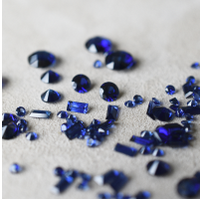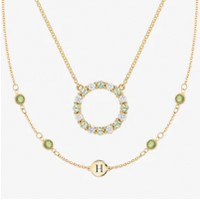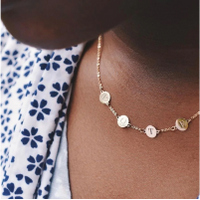Free Ground Shipping on orders $150+
Free 2-Day Air on orders $495+
Free Ground Shipping on orders $150+ | Free 2-Day Air on orders $495+
Popular Search Terms
Sorry, nothing found for ""
- EUR
- USD
- AUD $
- CAD
- GBP
The meaning of Turquoise
The name Turquoise comes from the French phrase "pierre turquoise," meaning "Turkish stone." (The gem first came to Europe through the Ottoman Empire.) It's one of the oldest known gemstones, and experts believe it may have been the first one ever mined, around 8,000 years ago.

The meaning of Turquoise
The name Turquoise comes from the French phrase "pierre turquoise," meaning "Turkish stone." (The gem first came to Europe through the Ottoman Empire.) It's one of the oldest known gemstones, and experts believe it may have been the first one ever mined, around 8,000 years ago.
Turquoise was considered a sacred stone by ancient peoples all over the world, including the Egyptians, Chinese, Persians, Aztecs, and Mayans. The Apaches thought that attaching a piece of Turquoise to an archer's bow would help him find his target. Turkish warriors wore Turquoise on their swords, armor, saddles, and bridles, believing that the stone would grant them courage and protect them and their horse in battle.
Connected to the throat chakra, Turquoise is a stone of communication. It helps us to speak our truth openly and without fear. If you're making a presentation or speaking in public, wear Turquoise jewelry to help express yourself clearly and calmly. Wearing Turquoise allows us to strengthen our relationships by being open and honest with family and friends.

Connected to the throat chakra, Turquoise is a stone of communication. It helps us to speak our truth openly and without fear. If you're making a presentation or speaking in public, wear Turquoise jewelry to help express yourself clearly and calmly. Wearing Turquoise allows us to strengthen our relationships by being open and honest with family and friends.
Turquoise is also considered a stone of great wisdom. It encourages us to silence our inner critics, learn from our mistakes, and move on. The gem's calming energy makes it wonderful to wear while meditating, too -- it reminds us to relax and simply breathe.
Turquoise is a birthstone for December and for the zodiac signs Sagittarius and Capricorn. It's also the gemstone for the 11th anniversary.
Since ancient times, humans have associated gemstones with healing properties and spiritual significance.
The pull to attach special significance to gemstones continues in modern times, with the designation in 1912 of birthstones for each month by the American National Association of Jewelers. Whether you choose a stone for its time-honored symbolism, its connection to your birth month, or simply its color, it’s fun to learn about these traditional meanings.
What is a Turquoise?
Turquoise is an opaque, blue-to-green phosphate mineral. It's found around the world in arid regions, especially near copper deposits. Today, the major producers of Turquoise include Iran, China, Mexico, Tibet, Australia, and the southwestern United States.

What is a Turquoise?
Turquoise is an opaque, blue-to-green phosphate mineral. It's found around the world in arid regions, especially near copper deposits. Today, the major producers of Turquoise include Iran, China, Mexico, Tibet, Australia, and the southwestern United States.
While some Turquoise stones are a solid color, many more feature dark brown veining, called a matrix. Turquoise is commonly cut and polished into rounded cabochon shapes to highlight its lustrous appearance.
Turquoise can range in color from sky blue to nearly green.

While some Turquoise stones are a solid color, many more feature dark brown veining, called a matrix. Turquoise is commonly cut and polished into rounded cabochon shapes to highlight its lustrous appearance.
Turquoise can range in color from sky blue to nearly green.
More fun facts about Turquoise
• Turquoise is the national gemstone of both Iran and Tibet
• It's believed that Native American tribes were mining Turquoise more than 2,000 years ago. Indigenous peoples believed that it represented water energy, and used the stone in rain-making ceremonies.
• People in the Himalayas thought that Turquoise came from heaven and called it the "sky stone."
• The color of any Turquoise stone is determined by the amount of copper in it.
• No other gemstone has a color named after it!

Caring for your Turquoise jewelry
Turquoise is appropriate for everyday wear, with a little extra care. It's somewhat soft, rating 5-6 on the Mohs hardness scale. In 1822 Friedrich Mohs created this scale to rate gemstones from 1 (softest) to 10 (exceptionally hard), based on their ability to withstand scratches. Be sure to store your Turquoise jewelry in its jewelry pouch or box to keep the gem from being scratched by other stones.
Turquoise is porous, meaning it can absorb chemicals such as lotions, creams, and perfumes, which may cause its color to change. Remove your Turquoise jewelry before applying anything that could be absorbed by the stone. Avoid wearing Turquoise in water. Keep it away from extreme heat and be sure not to strike it against hard surfaces.

Turquoise is porous, meaning it can absorb chemicals such as lotions, creams, and perfumes, which may cause its color to change. Remove your Turquoise jewelry before applying anything that could be absorbed by the stone. Avoid wearing Turquoise in water. Keep it away from extreme heat and be sure not to strike it against hard surfaces.
How to clean Turquoise jewelry
Maintain the beauty of your Turquoise jewelry by keeping it clean. Clean it occasionally with some warm water and blot dry with a chamois cloth. Never clean Turquoise with harsh jewelry cleaners, or in an ultrasonic cleaner.
How to wear Turquoise
With its brilliant blue hue, Turquoise will always make a statement when worn on its own. As an opaque gem, though, it provides a lovely contrast when paired with other stones.

How to wear Turquoise
With its brilliant blue hue, Turquoise will always make a statement when worn on its own. As an opaque gem, though, it provides a lovely contrast when paired with other stones.
Turquoise is especially stunning when paired with other blue tones. Try setting Turquoise with Aquamarine or Nantucket Blue Topaz (December's other birthstone) for a lovely contrast of opaque and translucent gems. Turquoise and Sapphire create a dramatic color story of bright and inky blue hues. Wear Turquoise with Amethyst for an interesting accent.

Turquoise is especially stunning when paired with other blue tones. Try setting Turquoise with Aquamarine or Nantucket Blue Topaz (December's other birthstone) for a lovely contrast of opaque and translucent gems. Turquoise and Sapphire create a dramatic color story of bright and inky blue hues. Wear Turquoise with Amethyst for an interesting accent.
While most of us are used to seeing Turquoise jewelry set in sterling silver or white gold, it also looks amazing in yellow gold!

While most of us are used to seeing Turquoise jewelry set in sterling silver or white gold, it also looks amazing in yellow gold!
Join our Circle
FAQ
Tradition says that wearing your birthstone is good luck, so if you're a December baby, it's a great choice for jewelry! Turquoise is considered to be a lucky stone in general, so it makes a wonderful gem for everybody. Try pairing it with Diamond -- that gem's dazzle, set next to the opaque blue of Turquoise, creates a stunning contrast.
People wear gemstones for many reasons, not just because it’s the birthstone for the month they were born. You may choose to wear a stone because you feel a connection to the color, because its traditional meaning resonates with you, or because it reminds you of someone you love, such as a child, friend, or loved one who’s passed away. Jewelry is extremely personal and you should feel free to wear any gemstone that speaks to you.
Because Turquoise is a porous stone, it can absorb not only water but also the chemicals found in lotions, creams, and perfumes -- and this can cause the stone's color to change. To keep your Turquoise jewelry looking its best, remove it before going into the shower or pool, and put it on after you've applied your skin-care products.


















































































































